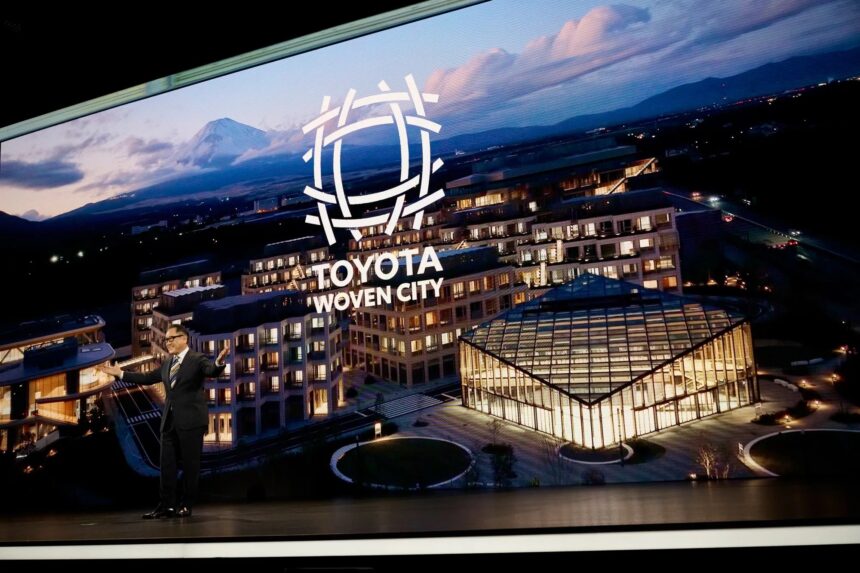Toyota has officially opened its long-anticipated “Woven City,” a high-tech village at the base of Mt. Fuji designed as a real-world laboratory for testing futuristic technologies—from autonomous vehicles and smart homes to flying taxis and household robots.
The project, first announced in 2020, stands on the former site of a Toyota factory in Susono, Shizuoka Prefecture. It is spearheaded by “Woven by Toyota,” the company’s mobility and innovation arm.
At its launch, Toyota Chairman Akio Toyoda described the site as “a test course for the future, not just a town,” underscoring the company’s ambition to rethink how people, machines, and infrastructure interact.
Everyday Life Meets Tomorrow’s Tech
Unlike traditional pilot projects confined to labs, Woven City embeds experimental technology into daily life. Its first phase will house about 360 residents—mainly Toyota staff and partners—with plans to expand to roughly 2,000 people.
Residents will experience technologies such as self-driving e-Palette buses, drones designed to escort people at night, and robotic assistants that can help with household chores. Smart homes will be fitted with sensors and AI to monitor energy use, automate tasks, and support elderly care.
For Toyota, the village is more than a showcase—it is a feedback loop. By observing how residents live with these innovations, engineers and startups collaborating on the project can refine designs, improve safety, and test usability in real-world conditions.
The initiative also serves as a platform for collaboration, with startups and researchers invited to deploy prototypes in a controlled but realistic environment. It provides regulators and policymakers a glimpse into the challenges of integrating advanced technologies into everyday society.
Why it Matters
The experiment holds promise for advancing mobility, healthcare, and urban living. Yet it also raises difficult questions. Privacy advocates warn about the risks of constant monitoring in smart homes and public spaces. Environmental concerns linger over the energy demands of autonomous systems and large-scale data processing.
Beyond Japan, the project sparks debate about whether similar “living labs” could be established in other regions. In places like Africa, for instance, the challenge is not only technological adoption but also adapting innovations to local infrastructure, resources, and cultural contexts.
For now, Woven City is a glimpse of how future societies may function when technology and daily life are fully interwoven. Whether it becomes a model for global urban living or remains a high-profile experiment will depend on how well its technologies scale, how residents adapt, and how broader society chooses to balance innovation with ethics.
Toyota’s venture may not answer every question, but it sets the stage for a crucial conversation: not just about what technology can do, but how people will actually live with it.
Talking Points
Toyota’s Woven City sounds like a dream—robots in kitchens, AI in homes, flying taxis in the skies. But we must ask: is this a city for people, or a city for machines being tested on people? When technology becomes the default infrastructure, everyday life risks becoming one giant product trial.
Africa should be paying close attention. While Japan is building “test villages,” most African cities are still struggling with reliable electricity, safe transportation, and affordable housing.
The gap is not just technological; it’s a mindset gap. Are African leaders thinking boldly enough about experimenting with city design, or are they waiting for Western or Asian models to trickle down?
A city where every home is wired, every street is monitored, and every resident becomes a data point might solve efficiency problems—but it risks turning citizens into lab rats. Who owns the data from Woven City? Toyota? The residents?
Or will it quietly be another commodity traded in the background? Africa, with weaker data protection regimes, could fall into an even more dangerous trap if such models are imported without safeguards.





